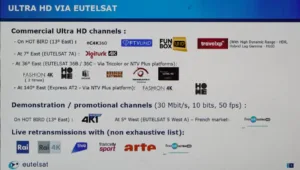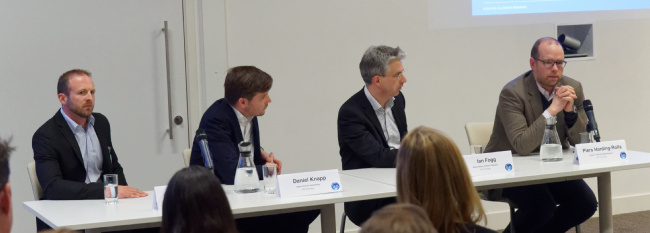IHS Markit held an event on UltraHD at the IFA Summit+ location. Initially, it looked as though there were only around three display analysts, as the other streams were running late, but the session did grow to an audience of, maybe, 40 or 50 people.
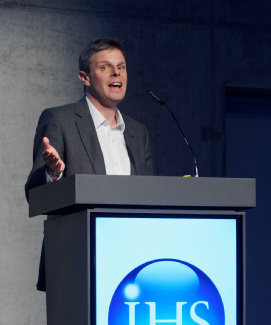 Anyway, the panel assembled by Paul Gray IHS was very strong, as always. The topic was ‘UHD:Beyond Resolution’ – moving from, as Dolby has said, more pixels to better pixels. That will increase the immersiveness of the TV experience, Gray said.
Anyway, the panel assembled by Paul Gray IHS was very strong, as always. The topic was ‘UHD:Beyond Resolution’ – moving from, as Dolby has said, more pixels to better pixels. That will increase the immersiveness of the TV experience, Gray said.
In China last year more than 50% of all TVs sold were UltraHD and is leading the sales of this resolution. The US has got closer and closer to Europe and Japan as a TV market – the market has moved away from just ‘big and cheap’ to care much more about image quality, which is a big change from the old way of TV buying in the US.
Japanese consumers buy smaller TVs than even in Indonesia – it’s not about price in that market, which makes the push to develop 8K slightly strange. Larger sizes have moved to UltraHD as panel makers simply don’t want to make anything other than UltraHD any more.
The Chinese love TVs and have the biggest TVs in the world and Gray said that as far as he is aware, China has the only culture where TVs are given as marriage gifts. Local brands dominate that market.
Japanese retailers really push UltraHD and try not to sell small sets, even though that is what a lot of consumers want to buy. Outside the developed world the TV market is really all about affordability.
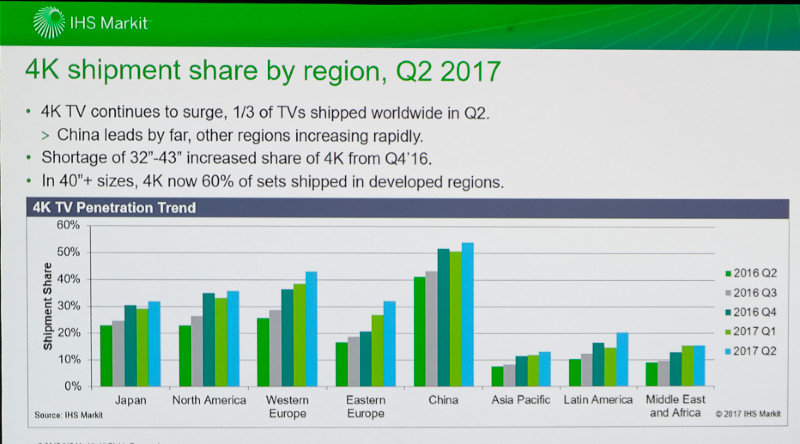
Turning to Europe – there is a trend to switch to UltraHD but this will be slower than the switch to HD. Many European consumers are still happy to buy 32″ to 43″ sets and there are still TV companies building new studios that are just SD because of the economics of going for HD, let alone UltraHD.
TV lifetime in Europe is around 8 years and is slowing – with UltraHD achieving 10% penetration of the installed based of sets by the end of this year and 25% by 2020 which makes a possible market for content suppliers, although all sets may not be able to support the technology that you may need by then.

Based on 4Ever user research from France, Gray said that UHD is visibly better than FullHD at 1.5 times the screen height but we don’t watch 84″ from 1.6m! Gray said there is no ‘Wow factor’ to UltraHD at normal viewing distances. (However, buyers, other than TV analysts, do not check TV resolution by sitting back at 3 or 4 metres from the set – they get up close to see how good the TV is – Man. Ed.)
HDR Captures Attention
HDR is very noticeable to viewers and contrast captures attention – OLEDs are the standout at this year’s IFA because of this. However, there is a level of brightness that becomes painful according to the 4Ever research.
HFR good for sport and demos have been very good but there is a lot of infrastructure needed to enable it. Deep colour is noticeable as well, Gray said.
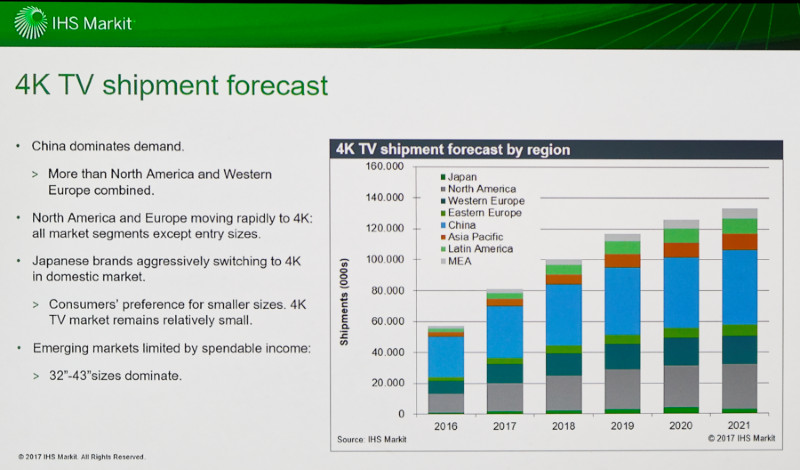
Pixels are like Love for Heimbecher
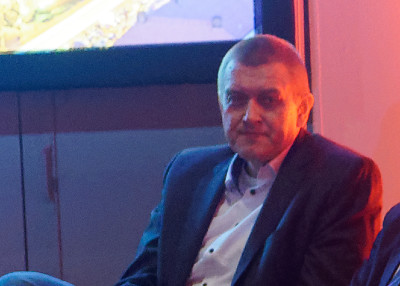 Stefan Heimbecher pixels are like love – you can’t have too much! What, then is the TV business selling, he asked?
Stefan Heimbecher pixels are like love – you can’t have too much! What, then is the TV business selling, he asked?
Heimbecher is from Sky Deutschland which has just passed the 5 million customer mark in Germany. There are more than 100 HD channels on its service and two UHD channels. The company is now part of the Sky Europe group and is increasingly coordinating on technology and platforms and the group in Europe has 22.5 million customers.
The company has been testing the live broadcast by satellite of UltraHD for a couple of years – and he said that HDR is very useful for soccer, which is important for Europe. Soccer is being broadcast in UltraHD and Sky Gremany has also just added Formula 1 motor racing onto the UHD platform.
Sky has a new receiver for UHD since last year that can display content from cable or satellite and Deutsche Telekom will make UltraHD available in the ‘autumn’ over its IPTV network.

Philips Still Promoting HDR
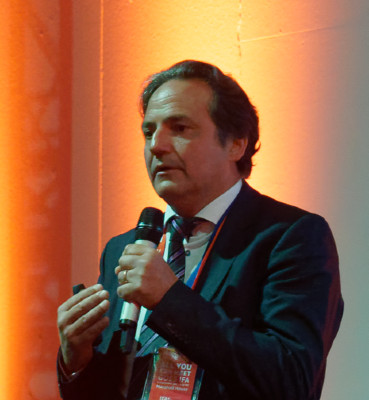 Frédéric Guillanneuf is from Philips which is working with Technicolor on solutions for the distribution and conversion of HDR. The companies work together because they had the same aim of working within the existing ecosystem. Encoding and transmission were based on SDR but new TVs can show much better images, these days. The brightness of sets has increased dramatically, he said.
Frédéric Guillanneuf is from Philips which is working with Technicolor on solutions for the distribution and conversion of HDR. The companies work together because they had the same aim of working within the existing ecosystem. Encoding and transmission were based on SDR but new TVs can show much better images, these days. The brightness of sets has increased dramatically, he said.
Content may have been created in many ways, with grading done at anything up to 4K cd/m². However, the transmission pipeline was created around a standard rendering brightness o 100 cd/m².
The Philips proposal is branded Technicolor, and includes technology to upconvert SDR to HDR and transmit it. (there are many SDR cameras still in operation, as Gray had said). The second component of the technology is the distribution of the content using a single stream using metadata to help the display in SDR or HDR.
Broadcasters like the idea that the companies have. In the US Spectrum Sportsnet (Charter) has used the technology in a sports event. There was a test to show that all TVs could be addressed.
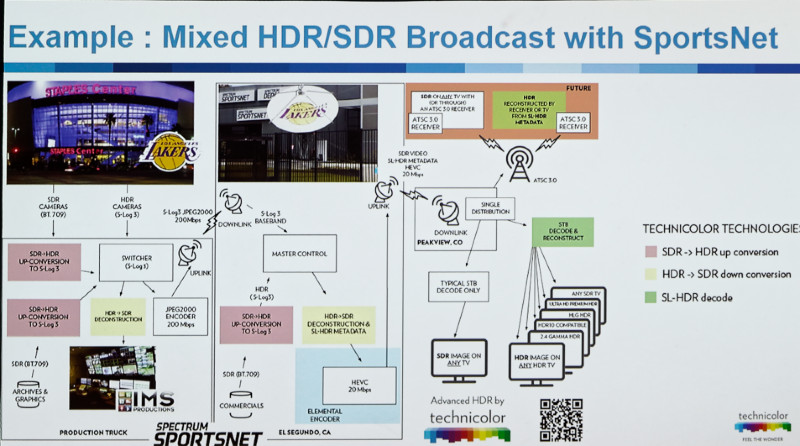
Eutelsat Has More than a Billion Viewers
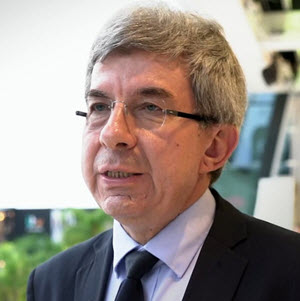 The next speaker was Michel Chabrol from Eutelsat which has 6,630 channels and with 1140 in HD. There are 39 satellites owned or operated by the company which has more than 1 billion viewers and the firm believes is a big market for DTH.
The next speaker was Michel Chabrol from Eutelsat which has 6,630 channels and with 1140 in HD. There are 39 satellites owned or operated by the company which has more than 1 billion viewers and the firm believes is a big market for DTH.
- On Hotbird there are four commercial UltraHD channels – C4K360, FTVUHD, FunBox and TravelXP which also has HDR using HLG.
- Digiturk is at 7º East
- at 36º East there are six channels
- at 140º East there are two
Eutelsat also has demo channels on hotbird of 4K1 and at 5º West Fransat UltraHD is trying with content that is protected. Other content includes RAI 4K and in the Euro 2016 championships, the six last matches were transmitted via TivuSat (encrypted, but free).
Eutelsat transmitted the French Open tennis from Roland Garros with FranceTV Sport. However, not everything is sport and Arte has produced the Vienna ballet and a production of Carmen from Aix en Provence in France.
Originally demos were created using Four FullHD streams, but then single streams were developed using the HEVC codec and now higher frame rates have been tested, up to 60fps by the end of 2016. One demonstration channel was taken away in the end to allow room for commercial channels, which is a positive sign.
Eutelsat is transmitting plenty of UltraHD. Image:Meko
Several brands have S2 demodulation, Chabrol said, and that is good for satellite providers. Rights for content tend to often be set on a national basis, but PayTV may have rights that are across the continent so security and encryption always have to be managed and considered.
Many TV sets have HDR now, but sometimes only for content coming via HDMI or IP, but not through the DVB tumers. That has changed during the year and now there are more that support HDR wherever the content comes from.
Production has become more affordable for documentaries – but not for studios yet – because of the expense of studio cameras which have much more sophisticated lenses than documentary cameras. However, UltraHD means big files and that needs a lot of management. However, UHD can be produced and rendered for HD as well which can make for efficient production.
Eutelsat has done some research on what content really benefits from UltraHD. Movies are the most important then sports and cultural events then documentaries. However, the time scale of the value of the content of these types of material can be very different over time.
- High immediacy – sports
- Temporary interest – weeks or months – lifestyle and fashion shows
- Long term value – cultural (operas, ballet, concerts) and wildlife
That means that for cultural and wildlife, if you go to the content shows, there is lots in UHD already as content creators want to make programmes that are going to appeal to consumers over a long period of time and not look obsolete quickly.
HDR with UltraHD is like ‘reality at home’, Chabrol said, and even better than the cinema (although this might change with the arrival of LED cinema – Man. Ed.)
UHDA Summarises Developments
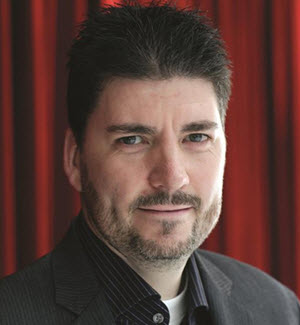 Michael Zink is from the UltraHD Alliance and is VP of Technology for Warner Bros. The UHD Alliance set out technical specs to meet quality benchmarks and then has introduced a logo programme to allow exploitation.
Michael Zink is from the UltraHD Alliance and is VP of Technology for Warner Bros. The UHD Alliance set out technical specs to meet quality benchmarks and then has introduced a logo programme to allow exploitation.
In online forums, there is some negative noise from consumers about UltraHD. (see our article UHD Alliance Heads for the Next Phase after our interview with Zink) The group analysed 6,000 blog posts. 25% were negative in tone – often because of interoperability. The UHDA has looked into this to try to solve the issues.
There are many different terms and logos so consumers are confused so the UHDA is planning a new website.
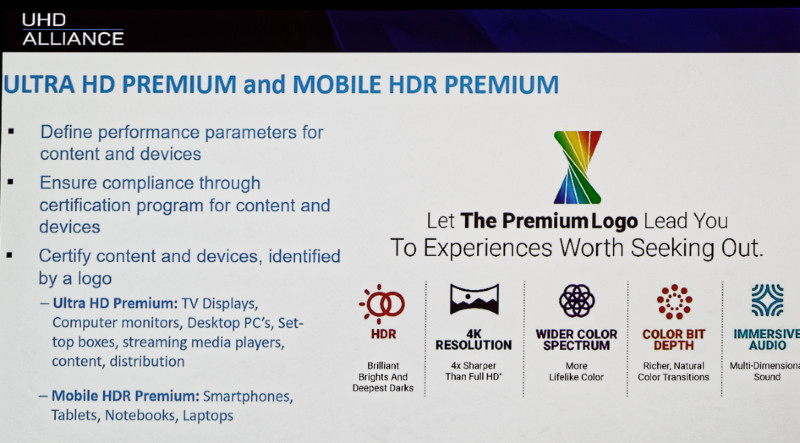
Questions
In questions, Heimbecher said that better sound is also important to improve the experience of UltraHD. Sound bars are getting better and Guillanneuf said that ‘you are looking for beauty’ at home and that means both HDR and WCG will be important.
Chabrol said in response to a question that there is no barrier to adding UHD to satellite platforms as HEVC can bring the bit rate down to 20-24Mbits with high quality as the encoders get better.
We asked whether panellists knew if Digital Europe was planning anything for HDR as it had done for the HD Ready logo (successful) and the UltraHD logo (less succesful). Panellsts told us that the organisation is trying to get to a new UltraHD spec and was trying to get it out in public at IFA, but failed because of ‘political issues’ within the group.
It was commented that 8K is strange Japan has a lot of content, but no sets. On the other hand, China has sets for UHD but no content. The view of the panel was that 8K won’t be important for a good number of years – somewhere in 202X.
In response to the question “Which HDR should the consumer buy?”, Zink said look for the logo!

